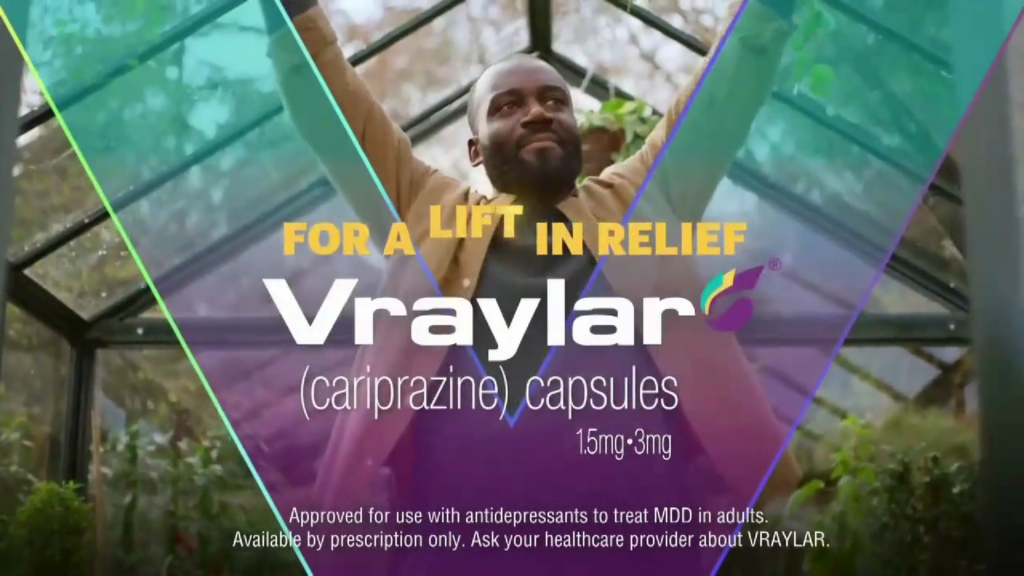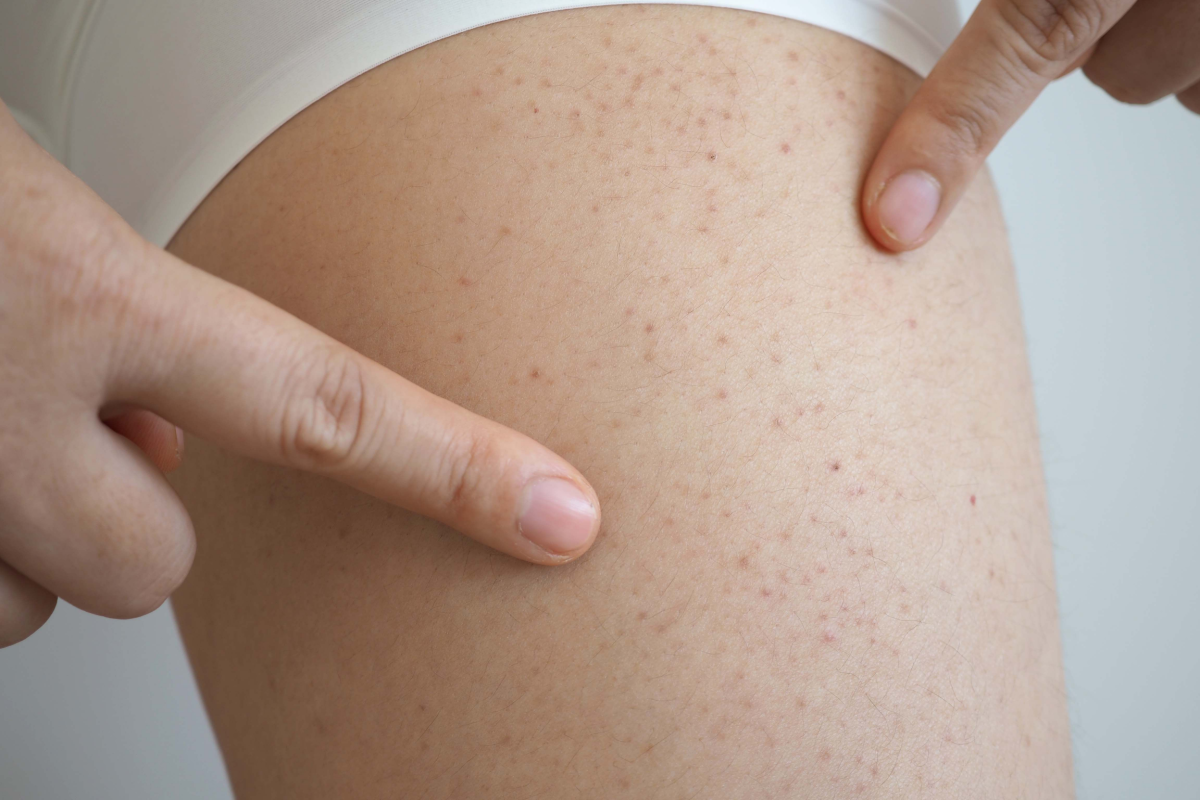AbbVie has launched another new direct-to-consumer (DTC) TV commercial for Vraylar (cariprazine), a US Food and Drug Administration (FDA)-approved medication used for treating bipolar depression and schizophrenia in adults. In 2022, it was approved as an adjunctive treatment for major depressive disorder (MDD) alongside a suitable antidepressant therapy.
The Vraylar “Stuck: Needed More” commercial, which debuted recently, has a male actor portraying that he was “stuck”, but combined with his current antidepressant regimen, Vraylar gave him just the right amount of “more” that was needed to resolve depression symptoms. This DTC ad is fifth in a lineup of Vraylar promotions, with an overall message of Vraylar being suitable for a diverse patient population battling depressive episodes for bipolar disorder and MDD.
According to a survey by the Kaiser Family Foundation and CNN, about one in five adults in the US report a fair or poor state of mental health. Around 21 million adults are affected by at least one major depressive episode, with higher prevalence in women and adults between the ages of 18 and 25. MDD is widespread, being one of the leading causes of disabilities worldwide, with symptoms like poor appetite, lack of energy, worthlessness and a consistently low mood.
Vraylar might offer relief to patients who might still be displaying depressive symptoms with their current antidepressant.
“Instead of starting over with another standard antidepressant, Vraylar works with an existing treatment and can help build on the progress already made,” said Gary Sachs, clinical vice president at Signant Health, associate clinical professor of psychiatry at Massachusetts General Hospital and lead Phase III clinical trial investigator in the press release marking MDD as the fourth indication for Vraylar.
Vraylar Reduced Depression Symptoms in Clinical Studies
Vraylar is an oral, second-generation atypical antipsychotic. It is one of the newer atypical antipsychotics approved for the treatment of MDD, schizophrenia and bipolar I disorder.
Two studies evaluated the safety, efficacy and tolerability of cariprazine as an adjunct treatment in MDD patients who had not responded well to an antidepressant-only regimen. Generally, patients tolerated cariprazine well over six- and eight-week study periods. The studies observed that the average weight gain was less than two pounds, and very few people (less than three percent) experienced a significant weight increase.
After six weeks, patients who took a small dose of cariprazine each day, along with their usual depression treatment, showed a noticeable improvement in their depression symptoms compared to those who did not receive cariprazine. The eight-week study found similar improvements with a slightly higher dose of the medication.
XTALKS WEBINAR: From Insight to Impact: Leveraging Early Medical Affairs Engagement for Future Commercial Success
Live and On-Demand: Wednesday, July 10, 2024, at 11am EDT (4pm BST/UK)
Register for this webinar today to learn how small and mid-sized companies can effectively prioritize and leverage medical affairs strategies to enhance asset valuation and navigate competition.
The Vraylar Commercial and DTC Advertising
The newly released Vraylar commercial is part of AbbVie’s strategic initiative to highlight the drug’s efficacy in stabilizing mood.
In terms of DTC advertising, AbbVie’s commercial leverages popular, grounded storytelling to connect directly with consumers. At one time, DTC campaigns were exclusively targeted towards healthcare professionals. All of this changed following the FDA’s 1997 decision to relax advertising restrictions.
Statista noted that the pharmaceutical industry’s expenditure on DTC advertising rose annually from $6.3 billion to $7.6 billion between 2016 and 2022.
Related: Top Pharma Ad Spenders in August 2023, AbbVie Splurges to Take Top Spots
With the rising number of patients leaning towards taking charge of their own healthcare, DTC has become a powerful marketing tool for drug companies.
However, the FDA does ensure that these ads are truthful and balanced in their message to consumers. A 2015 article on “The Impact of Direct-to-Consumer Advertising” highlighted that physicians are not sold on the idea of DTCs, particularly because they felt the ads did not educate patients on all aspects of the drug and felt pressured to prescribe a brand name.
Another piece discussed the dual impact of DTC ads, noting they drive consumer behavior and increase drug prescriptions, but their actual benefit to patient health remains debatable. Despite the FDA’s regulations, it might not always be possible to ensure that these ads provide unbiased information.
Trends in Mental Health Treatments and Pharmaceutical Marketing
In recent years, several pharmaceutical companies have developed drugs targeting mental health disorders.
The FDA recently approved the New Drug Application (NDA) for Otsuka and Lundbeck’s Abilify Asimtufii (aripiprazole), an extended-release injectable medication for adults with schizophrenia. Rejoyn, Otsuka and Click Therapeutics’ smartphone prescription app that trains the brain to process emotions was also approved as an adjunctive treatment for MDD.
Competitors like AstraZeneca with Seroquel (quetiapine; rights sold to Cheplapharm in 2019) and Eli Lilly with Zyprexa (olanzapine) have also used DTC advertising — where Eli Lilly was later fined heavily for its off-label promotion of Zyprexa — to reach a broad audience.
For AbbVie, the Vraylar commercial is expected to not only boost drug sales but also to enhance its standing in the mental health pharmaceutical market.
As the campaign unfolds, it will be interesting to observe how it influences public perceptions of bipolar disorder and its treatment options.












Join or login to leave a comment
JOIN LOGIN